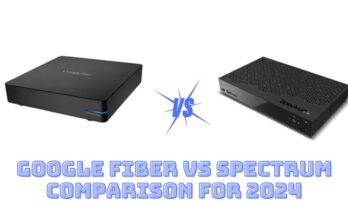The introduction of optic fiber technology has brought a significant change in the telecom industry in the United States. By implementing fiber optic cable internet, new technological developments have brought cheers for millions of people worldwide to experience much faster data transfer speeds.
Furthermore, it has brought great modern transformation to businesses and shifted how they view operational accuracy. With these perks and more, optical fiber stands as a fascinating fact that will keep progressing with premier future improvements. At Top Internet Plans, you can compare some top-rated fiber optic cable internet options.
Optical fiber and its cable have various cool technical qualities that make them amazing technology. Now, let’s share some awesome facts about optical fiber to show how well it works.
Operating Between -40°C to 70°C
The great thing about optic fiber internet cables is that they can sense and manage temperatures from -40°C to 70°C. They can also take care of tough weather and climate ruthless nature. Unlike old-style copper cables that get damaged by heat, cold, or rain, optical fiber can withstand all these harsh conditions. This option means it keeps providing high-quality and quick data transmission without disturbance.
Handling a Pull Tension of up to 200 Pounds
The reason optical fiber cables are tough is that they have rigid yarn inside, like Kevlar. It can handle a maximum pull force of 200 pounds, especially for indoor use in businesses. However, these cables are also made for external use and their pull strength can move up to 500 to 600 pounds.
28,000-Kilometer-Long Fibre Optic Connection
One impressive thing about fiber internet in my area is the use of FLAG (Fiber Optic Link Around the Globe). It is an optical fiber connection line that extends up to 28,000 kilometers. This cable is primarily used under the ocean to connect countries like the UK, India, Japan, and other locations.
Global Cloud Xchange, a licensed vertical of RCOM, is handling this entire cable. It’s a lengthy optical fiber connection that extends from the eastern coast of North America to Japan.
Minor Seconds Require Optical Fiber to Travel 206.9 km
People often detail that optical fiber internet enables data transmission within the speed of light. However, this statement is true only when considering the speed of light in a vacuum. When light travels through a substance like air or fiber optic cables, it slows down.
As per calculations and scientific studies, light travels approximately 31% slower through optical fiber cables. It means that your data actually travels at the speed of 206,856,796 meters per second.
To make it a more relative point, consider that light, in the form of internet signals or data, takes one millisecond to travel about 206.9 kilometers within the fiber cables.
Optical Fibre Cables Deliver Information 10x Faster than Satellite Communications
One basic feature of optical fiber cables is how light travels through them during transmission. This light remains admitted to the core of the cable because of total internal reflection. It allows signals to follow the cable’s curves, turns, and bends, effectively minimizing data loss and delays.
However, with satellite or wireless signals, data must travel in a straight line. Consequently, transmitting signals through curved or bent surfaces becomes significantly more troublesome.
As a result, when you want to communicate with someone outside your nation, delivering your message via satellite will result in a delay of 238 milliseconds. This presents a 10x delay in signal transmission compared to using optical fiber.
Optical Fibre Cable Rollout Count Around the World Has Surpassed the Count of 5-Billion Kilometers
Optical fiber cables have been implemented all around the globe, adding up to a combined length of 5 billion kilometers.
To make you understand how big this number is, 5 billion kilometers is the same as traveling to Mars from Earth 57 times.
Moreover, the estimated distance between you and the planet Pluto is about 5 billion kilometers.
The Final Words
Can I get fiber internet in my area? Yes, these important facts are connected with optical fiber cables and technology. They highlight the change that our world has made through the introduction of this modern innovation. The enhanced data transmission, high-speed internet capabilities, and numerous other features will reshape global communication and connectivity.



